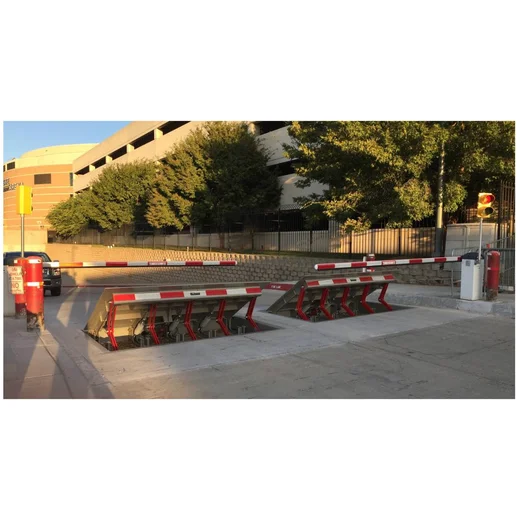
Why Invest in Hydraulic Barricades?
One of the main benefits of hydraulic barriers is that they look more professional. They can be installed with shallow foundation barriers to provide additional security against vehicle-based terrorism. Moreover, they save space because they do not require manual moving. This means that they are always in place.
They Stop And Disable a 15,000-pound Vehicle
Hydraulic barricades are portable crash barriers that can stop a 15,000-pound vehicle in its tracks. They were created for use by U.S. Federal government security specialists and are designed to stop and disable a vehicle traveling at 30 mph or more. These portable barriers are operated by a battery-operated hydraulic power system that can be used for emergencies and everyday tasks.
Hydraulic barricades reduce security risks by preventing vehicle-based attacks. They can protect facilities while permanent barriers are installed or where physical constraints prevent permanent solutions. They can be deployed in as little as two hours and stop a 15,000-pound vehicle in just 20 feet. They can also secure entrance roadways eight to 24 feet wide.
Unlike other barriers, hydraulic barricades can be deployed quickly and easily, preventing vehicles from passing. They can also be augmented with additional gates for increased coverage.
They Can Be Installed in Conjunction With Shallow Foundation Barriers
Shallow foundation wedge barriers are the most common type of barrier installed today. They require little excavation and can be installed without impact on existing underground utilities. They are commonly used in Government Facilities, Power Plants, and Sports Stadiums. Some of these barriers are fully electric, which reduces the environmental impact and operating cost, and integrates with other electronic systems.
Hydraulic barriers are pre-assembled and provide long-term protection from the weather, ice, and other hazards. These barriers are ideal for high pedestrian traffic areas and can be installed on shallow foundations. Some models also feature battery backup systems and accumulators for emergency operations. Either electricity or local energy sources can power hydraulic barriers. They are installed in an enclosure that protects against vandalism and can withstand significant pressures.
A hydraulic barrier is often used in conjunction with other protective measures for the foundation of a structure. These barriers can be installed over a narrow range of depths and spliced together for a greater depth. Using these barriers together can help prevent the collapse of a building.
Provide Security Against Vehicle-based Terrorism
Hydraulic barricades provide security in areas where vehicles are prone to attack. These barriers are ideal for parking lots or other locations where vehicles must be prevented from entering. They can be easily deployed and can protect a space for two hours.
Hydraulic barricades are designed to withstand vehicle speeds, weight, and ramming. They can also be used as movable security barriers to protect property. They are available in various styles, ranging from giant planters to movable barriers that raise and lower to provide access to a site or vehicle.
Reduce Security Risks
Portable barriers can be used in many applications and provide a safe zone around an event or facility. For example, they can help secure large venues during major sporting events or political conventions and provide a safe environment for a crowd. They are also an effective way to protect a facility while constructing a permanent barrier.
One of the most common applications for temporary barriers is to prevent unauthorized access. Typical scenarios include:
- Parking areas at a football game.
- Perimeters at high-profile conventions.
- Sidewalks in public spaces.
These barriers are ideal for temporary deployment and can easily move and reposition quickly. In addition, they can be used at stadiums to redirect traffic for sporting weekends or city parades. These barriers can also help to establish a safe zone for pedestrians or vehicles.
Temporary barriers can be made of various materials, including aircraft cable and chain-link fences. These types of walls are lightweight and can be set up almost anywhere. These barriers are typically crash-rated and tested to stop a 7.5-ton truck moving at 30 mph. They can also be used in a combination of supplemental gates to improve the effectiveness of a barrier.
